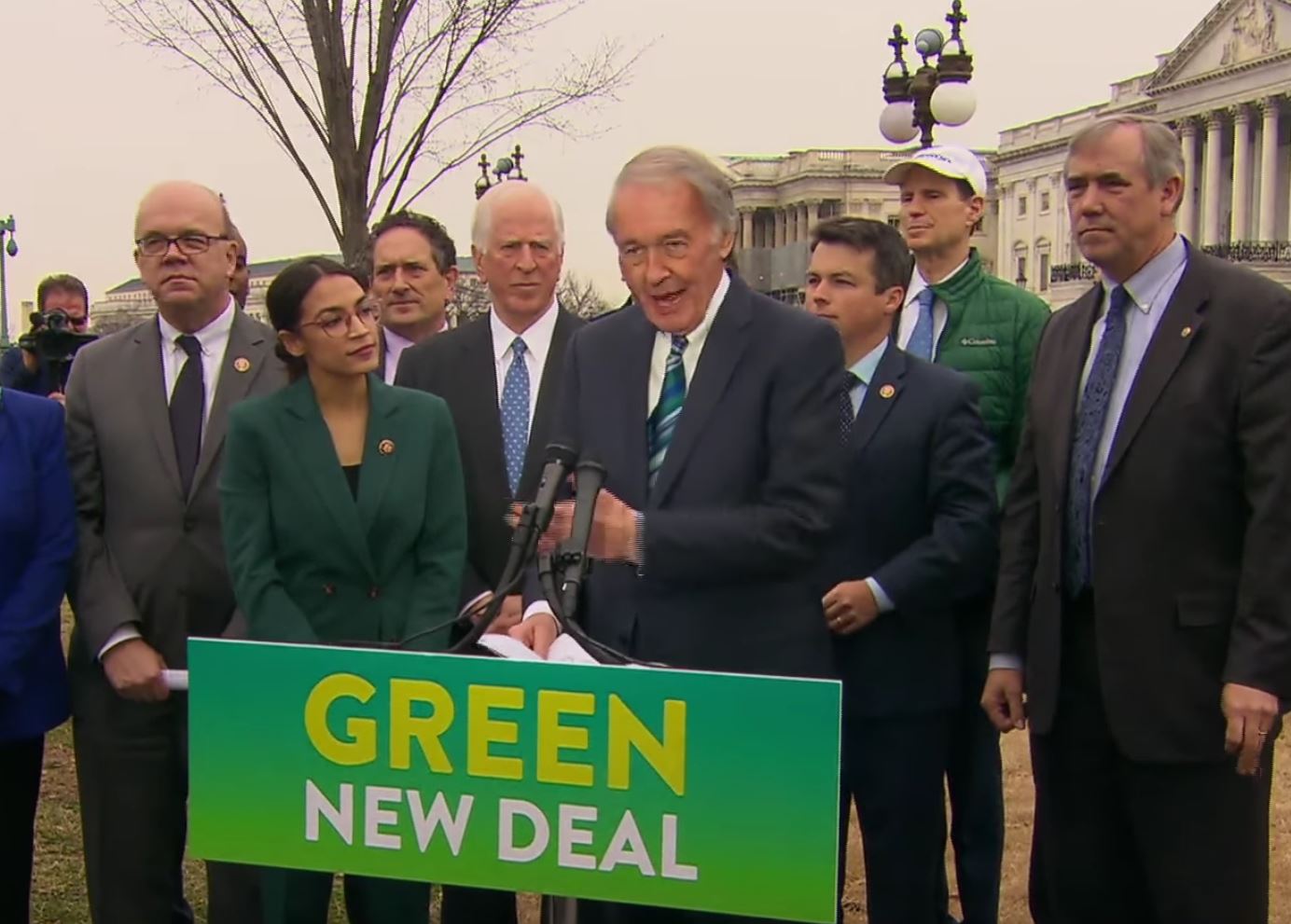Can wind power replace fossil fuels with the help of even less productive solar energy? The answer is no regardless of the extraordinary requirements presented to Congress in the Green New Deal (GND) . It states that the nation will transition to 100% renewable energy (without the help of nuclear power) by 2030. It requires a 50% cut in our military budget, the elimination of private transportation and a $60 a ton carbon tax that it estimates will raise $360 billion a year.
Were we to go forward with it, which we never will, there would be a wind turbine in everyone’s back yard. Wind power has many limitations. It is intermittent and inefficient, there are no back-up systems except fossil fuel power plants, three fourths of the US has inadequate wind, the acreage required to harness the wind is immense, the expense without government subsidy is not competitive, and there is a huge danger to our bird population. We also now know there is danger to human health created by. their throbbing noise, not to mention 110 deaths from escaping turbine blades in the past decade around the world. As a result Finland, Bavaria and Scotland have proposed legislation limiting wind turbines from being closer than 1.2 miles from housing.
The average turbine constructed today is rated to produce 2.5 megawatts of power (Boccard,N., “Capacity Factor of Wind Power,” October 2008, https://docs,wind-watch.org/Boccard-Capacity-Factor-Of-Wind.pdf.) That assumes the wind will blow at its most desirable speed between 8 and 25 miles per hour, 24 hours a day. None have ever produced more than 30 to 40% of that.
We of course know that when the wind does not blow no electricity can be produced to keep the electric grid balanced. We can keep fossil fuel plants at the ready when the wind declines but remember the idea of the GND is to eliminate fossil fuels. Elon Musk of Tesla fame believes battery backup will do the job. To prove it he built the world’s largest battery in South Australia which was capable of supplying 30,000 homes with one hour of energy at a cost of $50 million (Taylor,R.,”Tesla Delivers the World’s Biggest Battery,” Wall Street Journal, Nov. 23, 2017).
No bigger drawback to wind power is the immense amounts of land they require. The turbines must be placed far apart so as not to interfere with each turbines capture area. The federal government’s National Renewable
Energy Laboratory (NREL) has reported the most definitive estimate of total land use for wind farms. They calculated generously that the 172 largest installations in the US produce 10,000 Mega Watts on 8,800 square miles (Denholm,P., Hand, M., Jackson, M., Ong., S., “Land Use Requirements of Modern Wind Power Plants in the United States,” NREL Technical Report NREL/TP-6A2-45834, August, 2009).
Thus to produce energy equivalent to the average fossil fuel power plant of 1000 megawatts of electricity requires 880 square miles of land. This is six times more land than an equivalent solar farm of photovoltaic cells and more than 500 times the land required for an equivalent nuclear power plant.
As for the cost of wind, the US Energy Information Administration (EIA) reports that today wind power can generate electricity for 8 cents a kilowatt hour (Levelized Cost of New Generation Resources in the Annual Energy Outlook, Energy Information Administration)
However, this makes poor assumptions and ignores some realities. It assumes an average lifetime of a wind turbine to be 30 years, the same as a conventional fossil fuel power plant. Experience shows that most turbines last only 15 years. It ignores the cost of backup power when the wind does not blow. It includes no cost for transmission lines to the electric grid. Of greater importance, it omits government subsidies. A 2016 study at Utah State University (Hansen,M.E., Simmons,R.T., Yonk, R. M., The Unseen Costs of Wind-Generated Electricity, The Institute of Political Economy, Utah State University, April 2016,www.usu.edu/pie.) shows the following extra costs for the omission or miscalculation of wind power: 15 years not 30 year life of turbines (7 cents), backup power (2.3 cents), transmission costs (2.7 cents), government subsidies (23 cents) making the real cost of wind power 43 cents per kilowatt hour. This is about the same as the cost of solar power but 7 times the cost of natural gas power. Who can afford this? Could American industry afford this?
Wind farms may be beautiful to some, spoil the landscape for many more. The main environmental concern is the number of birds and bats that wind turbines kill each year. The Audubon Society estimates that 330,000 birds die annually in North America at our wind farms (Bryce,E. “Will Wind Farms Ever Be Safe For Birds?” Audubon Society News).
Everyone is excused for thinking wind energy is cheap and wonderful. Few ever are exposed to the real costs. The Green New Deal is counting on the lack of education and knowledge dealing with this seemingly benign resource. I hope none of my readers will be further fooled by intentional lies aimed at reprogramming out great nation.
Portions of this article have been excerpted with permission of the publisher and author of the 2018 book THE MYTHOLOGY OF GLOBAL WARMING by Bruce Bunker, Ph.D., Publisher Moonshine Cove. The author of this article strongly recommend this book as an excellent source of detailed information on renewable energy.
